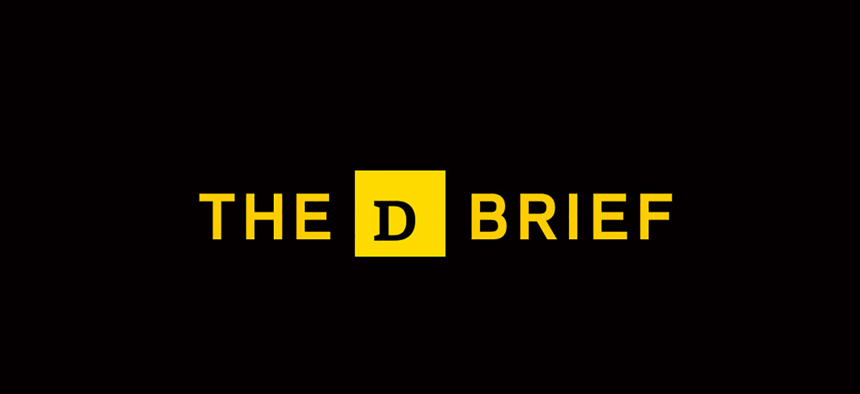
Horror in Dallas; NATO summit kicks off; THAAD to deploy to Korea; F-35, Brexit, and Farnborough; and a bit more...
Gunmen kill four police officers in Dallas: “This is a nightmare: The nightmare of a terrorist attack at a peaceful, familiar street intersection where we have all been a thousand times,” wrote Dallas Morning News columnist Jacquielynn Floyd early this morning. She was writing, of course, about this: “Two snipers shot and killed four Dallas police officers and a DART officer Thursday night during a protest downtown. Seven other officers and two civilians were wounded in a coordinated attack during the demonstration against recent shootings of black men by police in Louisiana and Minnesota.” (Read continuing coverage of the attack from the Morning News, here.)
Continued Floyd: “This is terrorism. This is what terrorists do. It isn’t a war — not black against blue, or us against them. When a reported two gunmen opened fire Thursday night on police officers, on our police officers, they attacked us all.”
Brexit casts its shadow on NATO Summit. USA Today: “President Obama and leaders of the European Union tried to put to rest any concerns that the United Kingdom’s Brexit referendum would lead to further disintegration in Europe Friday, as they kicked off a two-day summit of NATO leaders. Obama said the summit comes ‘at a critical moment for the European Union," with some suggesting that "the entire edifice of European security and prosperity is crumbling.’ Those concerns, Obama said, are misplaced and hyperbolic.”
Others added their own reassurances. Writing in Defense One, the UK ambassador to the United States said. “The UK has the world’s fifth-largest defense budget. We are – and will continue to be – leading members of NATO, the G7, G20, and the Commonwealth, and permanent members of the UN Security Council, the only country in all of these groups which spends 2 percent of its GDP on defense and 0.7 percent on development assistance. Following our Strategic Defence and Security Review last year, we are investing $250 billion over the next decade in modern and capable Armed Forces.” Read that, here.
What’s on the table in Warsaw? Nothing less than the most important decisions in 25 years, according to Ivo Daalder, a former U.S. ambassador to NATO. “The task of NATO leaders is to put in place policies and processes that respond to this triple challenge to Europe’s security in ways that are clearly understood by the alliance’s adversaries and supported by increasingly restive publics on both sides of the Atlantic. It is a tall task, indeed.” Details here.
But can NATO’s members come together? “What are countries looking for from Warsaw? Unsurprisingly, many nations are going in with their own agendas, driven primarily by regional focuses,” writes Defense News. “Norway, for example, is looking for a focus on the High North region of Europe that could be imperiled by Russian naval forces…” Read on, here.
ICYMI: From the Council on Foreign Relations’ Jonathan Masters, a guide to the Cold-War alliance under pressure as it transforms itself for 21st-century challenges, here.
 From Defense One
From Defense One
What presidents do when naval encounters turn deadly? Three incidents that shook the nation hold lessons for future commanders-in-chief, writes Douglas Peifer of the U.S. Air Force’s Air War College. Learn those, here.
Panel: Overhaul veterans care by working with more private-sector firms. The Commission on Care's final report declines to recommend stripping the Veterans Health Administration of its status as a government agency. Via GovExec, here.
Welcome to the Friday edition of The D Brief by Bradley Peniston. On this day in 1709, Russia defeats Sweden at the Battle of Poltava, forever shifting the region’s balance of power. Send your friends this link: http://get.defenseone.com/d-brief/. And let us know your news: the-d-brief@defenseone.com.
U.S. will deploy THAAD to South Korea. Pentagon officials made the announcement last night, Defense News reports. The officials stressed that the anti-missile system is being sent in reaction to North Korea, which has been issuing threats and conducting ever-more advanced weapons tests. In effect, they all but screamed “China, this isn’t about you.”
But that’s not likely to wash in Beijing. Why? As Elbridge Colby of the Center for a New American Security sees it, China dislikes THAAD’s missiles but hates its radar, which could track PLA launches. Beijing sees THAAD as a threat to its retaliatory capacity, and therefore, a reason to start building more nukes. So this decision to beef up defenses against NorK has the potential to destabilize the nuclear balance with China. Read more, here.
And here’s more on “The US Missile System Driving a Wedge Between China, South Korea.”
Brexit fears loom as U.K. airshows begin. The long-awaited debut of the F-35 in the U.K. has collided with the economic instability fears following Britons’ vote to leave the European Union. “I think much of this lies ahead of us as to actually what the impact will be,” Jeff Babione, executive vice president and general manager of the F-35 program for Lockheed Martin, said Thursday. Defense One’s Global Business Editor Marcus Weisgerber breaks down what to expect at the Farnborough Air Show. More here.
This week, however, there's the Royal International Air Tattoo, one of the world’s largest military air shows that officially opened this morning. Defense One got a sneak peek Thursday as many of the planes arrived at RIAT (pronounced ree-ott). Check out some of his pictures, here.
When will the Air Force’s F-35 be ready for battle? Gen. Herbert “Hawk” Carlisle, head of Air Combat Command who will make that decision, gave a whole lot of clues for when he’ll declare the Joint Strike Fighter war ready during an international media day hosted by the plane-maker Lockheed Martin at RIAT. The Air Force has said the plane will be battle ready between August and December. “I personally believe that we’re going to be able to declare IOC at the leading edge of that window,” Carlisle said. “So as we look at things, we’re getting close.” More here.
Among the F-35 criticisms is: can it dogfight? “It handles the way we want it to handle,” said Maj. Will Andreotta, a U.S. Air Force F-35 pilot and commander of the Lightning II Heritage Flight Team. “The whole idea of stealth and when an aircraft is optimized for stealth is that we are never seen,” he said. “But with that being said, if we do get in a dogfight, I have complete confidence in this aircraft … and the pilots that we have flying those aircraft.”
Let’s now shift to the F-22 Raptor, which of course is here too. It flew its practice run yesterday, its roaring engines prompting F-35 pilots to occasionally pause their discussion with reporters in a tent next to the flightline. Congress has asked to Air Force to reconsider what it would take to build more of the stealthy jets. In April, we told you it would take a lot to restart production, which was halted in 2012. Since then, many of the jet’s subcontractors have “gone on to other things,” Carlisle said. “The F-22 is a fantastic airplane, but getting that back up to speed with all the sub[contractors] could potentially be a challenge,” he said. “That’s very much a personal opinion.” The Air Force could better spend its money on upping the rate at which it buys the F-35 and beginning to look at what a next-generation “penetrating counter-air capability” looks like.
